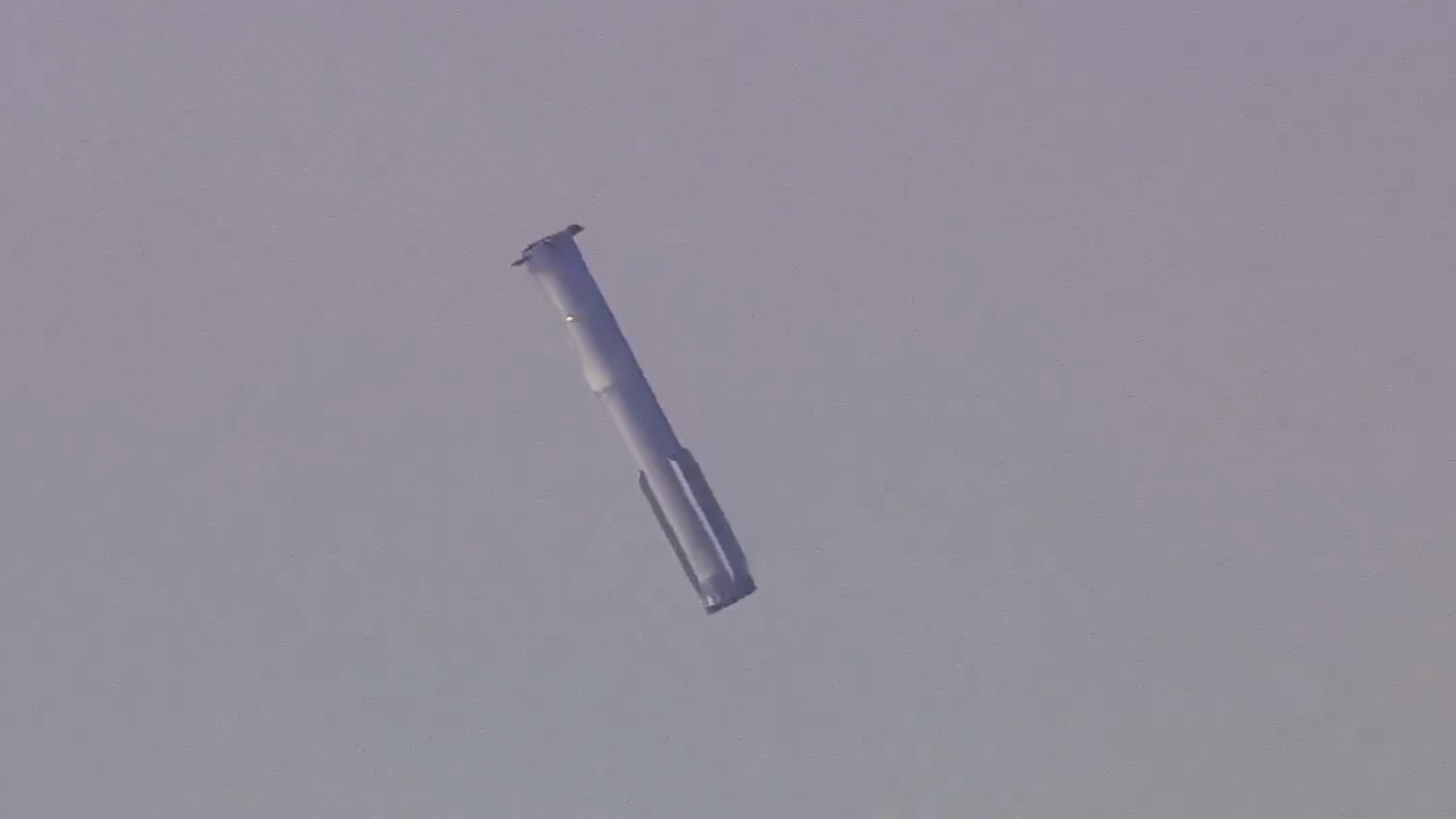
Watching Starship come back to Earth last week was perhaps even more exciting than seeing it rise off the pad.
SpaceX launched its Starship megarocket for the fourth time ever on June 6, sending the giant vehicle into space from its Starbase site in South Texas.
The flight plan called for both of Starship's stages — the Super Heavy first-stage booster and the 165-foot-tall (50 meters) upper stage, called Starship, or just Ship — to steer themselves back to Earth for ocean splashdowns. Super Heavy was supposed to come down in the Gulf of Mexico, and Ship targeted the Indian Ocean. Both stages managed to stick their landings, and we got great looks at Super Heavy's homecoming.

On Saturday (June 8), SpaceX posted on X a 25-second video of the final stages of Super Heavy's descent through Earth's atmosphere. The video, which combines footage from a boat or drone with that captured by Super Heavy's onboard cameras, captures the roar of the booster's Raptor engines as they fire in a landing burn just above the waves.
Super Heavy looked to be more or less intact, which you couldn't quite say for Ship. The upper stage went much higher, faster and farther than Super Heavy, so its reentry was more fiery and dramatic. It lost many heat-shield tiles, for example, and one of its flaps nearly burned through from frictional heating, but Ship managed to hold together until it hit the water.
Related: SpaceX's Starship 4th flight test looks epic in these stunning photos
Starship's performance has improved on each of its four test flights, all of which have occurred in the past 14 months. On Flight 1, for instance, Starship's two stages failed to separate as planned, and SpaceX detonated the tumbling vehicle about four minutes after launch.
Stage separation occurred on Flight 2, but it too was relatively short, ending just eight minutes in. Flight 3 lasted nearly 50 minutes, but neither Super Heavy nor Ship made it to their planned splashdown zones; both vehicles broke apart while coming back to Earth.
SpaceX is gearing up for the fifth launch of Starship, the biggest and most powerful rocket ever built. But we may have already seen the last Super Heavy ocean splashdown; shortly after the June 6 launch, SpaceX founder and CEO Elon Musk suggested that the company might try to catch the returning booster with the "chopstick" arms of the giant launch tower at Starbase.







